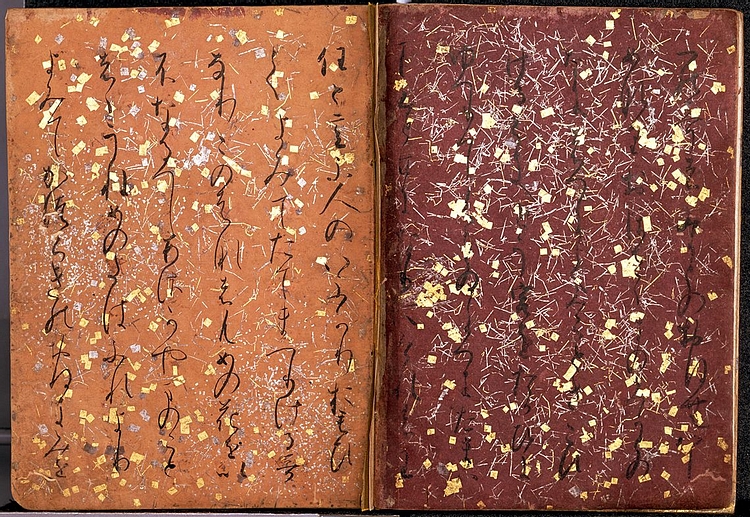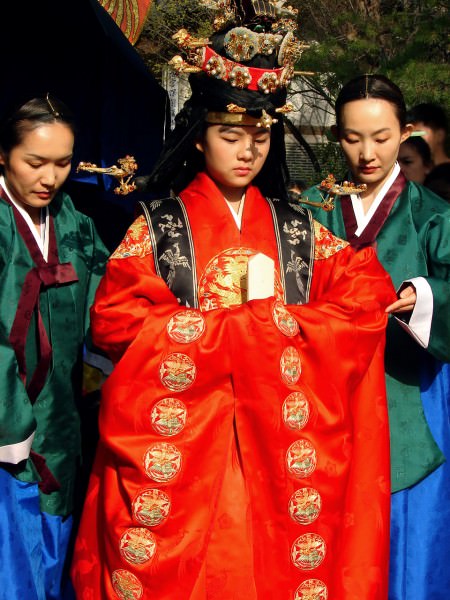Ono no Komachi › Bone Rank System » Ancient origins
Articles and Definitions › Contents
- Ono no Komachi › Who Was
- Bone Rank System › Ancient History
Ancient civilizations › Historical and archaeological sites
Ono no Komachi › Who Was
Definition and Origins

Ono no Komachi was a poetess of great renown during the Heian Period (794-1185 CE) of ancient Japan. The Kokinshuanthology, compiled in 905 CE, contains many of her poems, and her work and life inspired later writers of Noh drama. She is considered one of the rokkasen or Six Immortals of Poetry in Japan.
BIOGRAPHICAL DETAILS
Very little is known of Komachi's life except that she was perhaps born between 820 and 830 CE and was active in the mid-9th century CE. She was famous for her beauty and passion, she likely served at the court of Emperor Ninmyo (r. 833-850 CE), and her poems were a success in her own lifetime. Beyond this sparse information we know only some of the lovers Komachi addressed her poems to. Still, this has not prevented a myriad of legends being created about the poetess based loosely on some details within her poems. Indeed, by the 11th century CE, there were so many stories based on the figure of Komachi that some scholars have identified the object of the legends as actually four different women.
One of the most famous stories concerning Komachi is her rather harsh treatment of her admirer Fukakusa no Shosho.Komachi warned the would-be Romeo that he would have to visit her every night for 100 nights before she would submit to his charms. The poetess' beauty must indeed have been great for Fukakusa set about his task with determination and turned up each evening at Komachi's house in all weathers. Tragically, though, the strain proved too much and - so near, yet so far - Fukakusa died on the 99th night.
KOMACHI'S POEMS OFTEN HAVE A THEME OF SADNESS OR MONO NO AWARE ('THE SADNESS OF THINGS').
Other legends concern the writer's later life and hard times when, perhaps in comeuppance for her notoriously bad treatment of admirers, she lived to be 100 but roamed the streets ugly and dressed only in rags, the object of mockery from all who passed her. The life of the poetess and the legends which sprang up about her became a popular subject with writers of Noh drama from the 14th century CE onwards.
THE POEMS
Like those of her contemporaries, Komachi's poems often have a theme of sadness or mono no aware ('the sadness of things'). They deal with such subjects as lost love, unrequited love, loneliness, and the passing of time symbolised by changes in nature, especially fading blossoms and the changing colour of leaves in autumn.
The Kokinshu is an imperially commissioned anthology of poems with the full but less familiar title of Kokin Wakashu, meaning 'Collection of Ancient and Modern Waka Poems'. It was compiled by the poet Ki no Tsurayuki in 905 CE and contains 1,111 works in the waka form where each poem, written in Chinese, has 31 syllables divided into five lines of 5+7+5+7+7 syllables.The Kokinshu is our best source of the works of Ono no Komachi with 18 poems, and below are five examples which illustrate the poet's mix of passions and melancholy, as well as her use of words and phrase which are open to more than a single interpretation. The historian Donald Keene summarises Komachi's literary style in the following terms,
The intensity of emotion expressed in Komachi's poetry not only was without precedent but would rarely be encountered in later years. The poetry of the Kokinshu was usually pitched in a lower key, and the ingenious use of language was a mark not of overpowering emotion but of a kind of intellectuality. Komachi's poetry, however extravagant in expression, always seems sincere. (235)
The flowers witheredTheir colour faded away,While meaninglesslyI spent my days in brooding,And the long rains were falling.(Keene, 234)
This night of no moonthere is no way to meet him.I rise in longing:My breast pounds, a leaping flame,my heart is consumed by fire.(Keene, 235)
Ever since I sawThe man who is dear to meWhile I was nappingI have begun to BelieveThe things that people call dreams(Keene, 1094)
In reality,It may well have to be;But even in my dreamsTo see myself shrink from others' eyesIs truly sad.(Mason, 84)
So lonely am IMy body is a floating weedSevered at the roots.Were there water to entice meI would follow it, I think.(Keene, 235)
This article was made possible with generous support from the Great Britain Sasakawa Foundation.
Bone Rank System › Ancient History
Definition and Origins

The Bone Rank System ( Golpum or Kolpum ) of ancient Korea was used in the Silla kingdom (57 BCE – 935 CE) in order to signal a person's political rank and social status. Membership of a particular rank within the system was extremely important, permitting a person to apply for certain jobs and deciding how they lived their everyday lives. The rigidity of the system, based as it was on lineage, allowed for very little movement between the classes resulting in a stagnation of talent, which eventually cost the Silla dear.
THE RANKING SYSTEM
The Bone Rank System, so called because it was based on a person's hereditary bloodline, was introduced as part of a new law code in 520 CE by king Beophung (aka Pophung, r. 514-540 CE). This caste system had three main classes: the highest was 'sacred bone' ( seonggol ), then 'true bone' ( jingol ), and finally 'head rank' ( tupum ). The Silla kings, descended from the Pak royal line or their successors the Kims, were all of the sacred bone class. From the mid-7th century CE the sacred bone class was abolished and, thereafter, royalty held the true bone rank along with lesser royals, ministers of high office, and high-level aristocrats.
The head rank class was the largest and itself divided into six subclasses. These were numbered with ordinary people belonging to class one, two, and three. The aristocracy belonged to levels four, five, and six. These top three levels were linked to a person's family ties and/or land they owned, and certain clans dominated the higher positions.
ONLY WOMEN OF THE SACRED BONE RANK COULD WEAR HAIRPINS INLAID WITH JADE OR GEMSTONES.
PRIVILEGES & RESTRICTIONS
Membership of the head rank class was necessary for a person to be considered for civil and military roles in the state apparatus, with the most senior positions reserved for those in the higher numbered subclasses. One's bone rank decided the type of people one could interact with socially, who one could marry, and how much tax had to be paid to the state. Further, membership of a specific level was necessary for a person to enjoy a certain type of housing, not only the size but also decoration as, for example, ceramic roof tiles (instead of thatch) were a very practical and visible badge of rank in Korean society. Bone rank decided which transport people might use, the type of saddle they could sit on, the number of servants they were permitted to have, and even which utensils they could use. Clothes were another visible indicator of social status. Men who were members of the true bone class were not permitted to wear clothes which had embroidery, brocade, or fur, while only women of the sacred bone rank could wear hairpins inlaid with jade or gemstones.

Korean Royal Wedding Re-enactment
SOCIAL IMMOBILITY
Although a particularly appreciated service to the monarch or a senior government official might bring a reward of land and titles, there was, otherwise, not much chance of climbing the social ladder. As the historian K.Pratt notes, "Social mobility was rare, and for most people their occupational and social status was inherited" (79). That is to say, one's birth was by far the most important factor in determining the level one would reach in society as an adult. Even the son of a merchant might expand his father's business considerably, but this new wealth would not have entitled him to access the higher levels of the bone rank system.
The rigidity of the system allowed those who had power to keep it unchallenged, but one of the unfortunate consequences of it was that talent often went unrewarded and the state lost the opportunity to use gifted individuals for the good of all. Indeed, this social stagnation has been cited by many scholars as one of the factors leading to the ultimate downfall of the Silla regime.
This article was made possible with generous support from the British Korean Society.
LICENSE:
Article based on information obtained from these sources:with permission from the Website Ancient History Encyclopedia
Content is available under License Creative Commons: Attribution-NonCommercial-ShareAlike 3.0 Unported. CC-BY-NC-SA License